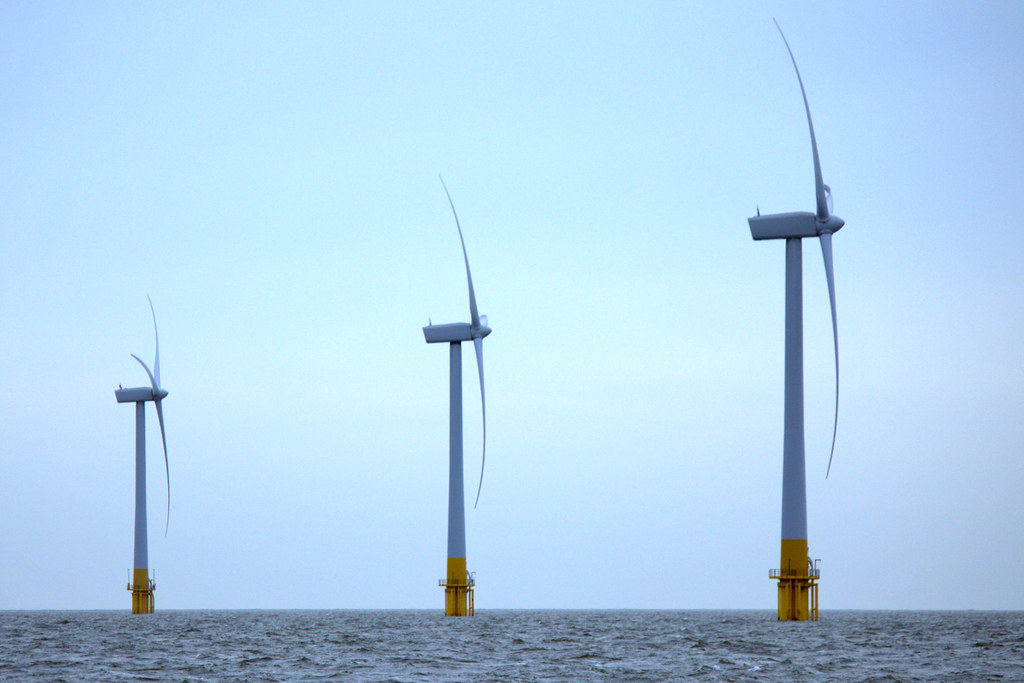By 2050, nearly 100% of electricity is planned to be produced using renewable energy sources in the Baltic States. How much of that has Latvia achieved now, and how is it going for neighboring Lithuania and Estonia?
Energy expert Reinis Āboltiņš told Latvian Radio that wind energy currently produces up to around 2% of electricity per year, but this figure is variable because wind turbines cannot be operated constantly at full capacity. But there is absolutely nothing produced from solar energy, industrially. There are local, small energy systems in which companies or individuals have installed small-capacity solar panels.
"If we compare with Lithuania and Estonia, Latvia is very much behind, with 80 megawatts of total wind energy capacity. Compared with Lithuania's approximately 600 megawatts and Estonia's approximately 400. (..) In Latvia, we do not use the potential, because it is not like Lithuania and Estonia have wind but not Latvia," Āboltiņš said.
Unlike neighboring countries, Latvia has more barriers that have not allowed wind energy to develop. For example, renewable energy regulation has been very unstable over the past 10-15 years. The property rights aspect also slows down wind park development because of the difficulty of finding a place where several turbines can be installed. Environmental assessment is a necessary but it is a complex process. And finally there are people's attitudes. Despite the environmental assessment, these are most frequently dismissive.
“They don't want to see wind turbines in their county, near their city, village or town. It is one of the most serious barriers, not only in Latvia but elsewhere. There are also very many myths and legends about the negative effects of wind energy. One thing, for example, is that wind turbines kill a lot of birds. Wind turbines kill birds, of course, but they are about 20th on the list among things that kill birds. Most birds in the world are killed by domestic animals. Then there are glass facades and different means of transport,” the energy expert said.
However, despite the skepticism, stereotypes and fears in Latvian society, the growth of wind and solar energy volumes in Latvia is inevitable in the next 30 years.
“In 2050, 98-100% of electricity will be produced using renewable energy sources in the Baltic States. This means that the gas era will be over in the next 30 years and that other types of fossil fuels will not be used either. This means that the greatest contribution to this growth will be in the form of wind and solar energy. It is a positive future,” said Āboltiņš.
This means that it is planned to increase wind power capacity to 800 or up to 1000 megawatts in Latvia in the coming years. Wind development plans are also ambitious in Lithuania and Estonia. For example, Latvia and Estonia plan to build a wind energy park together in the Gulf of Riga. There are no plans with Latvia and Lithuania's collaboration yet.
"The Baltic States must be seen as a single energy system. This is the main thing we need to understand in Latvia. We've never been isolated from our neighbors in the energy system. If Lithuanians and Estonians install more wind turbines, it also benefits Latvian energy carriers," Āboltiņš said.
Skeptical of Latvia's ambitions to use wind and solar energy is the Chairman of the Board of the Latvian Renewable Energy Federation Janis Irbe. He pointed out that Latvia has no strategic plan in energy for the next ten years.
The interest of foreign investors is high, projects are examined in a number of ways, but not leading to real jobs. Often, a non-penetrable wall is public rejection.
“In Latvia, as a sparsely populated country, a few dozen signatures are enough to get a big project rejected. The investment is grandiose. (..) Unfortunately, a large part of this dedicated money is written off and it undermines the investment environment, trust in it. One, the other, the third, fourth project fails. Everybody starts to see that something is not really right in Latvia,” Irbe said.
Deputy State Secretary of the Ministry of Economics Edijs Šaicāns acknowledged that the potential for wind and solar energy is limited and that barriers need to be reduced. When asked why Estonia and Lithuania are well ahead of Latvia in the use of wind and solar energy, Šaicāns replied:
"On the background of European countries, Latvia is already the greenest country. Much greener than Lithuania and Estonia. We just had different starting positions. We already have a green country. More than 60% of electricity produced in Latvia is green, produced by hydroelectric plants. In Lithuania and Estonia, however, there was no such thing. Clearly, they had to focus on this much more quickly, because otherwise they would not achieve climate objectives. Yes, you can say we may have gone on a break. (..) We now have to wake up from such a hibernation mode and try to follow up.”






























